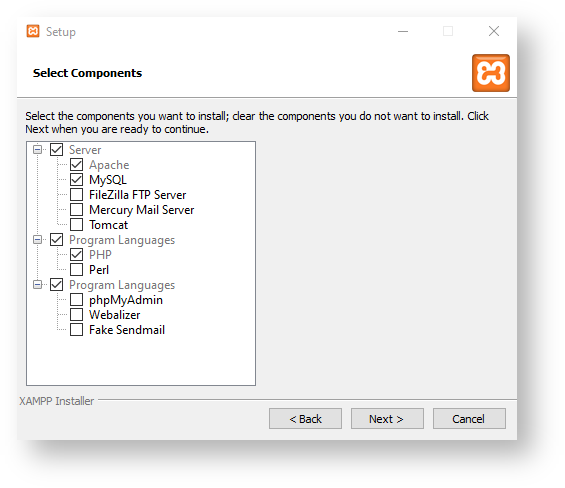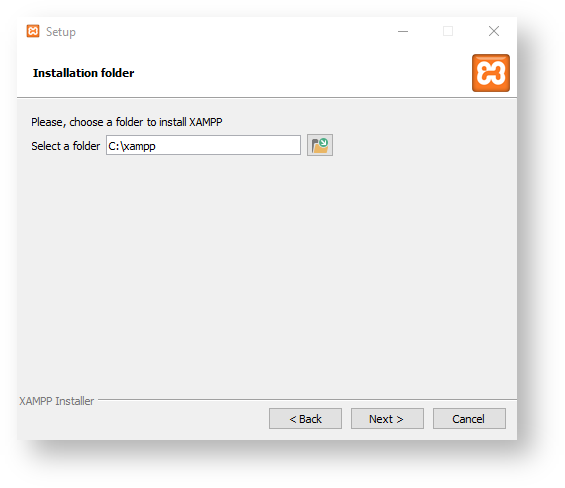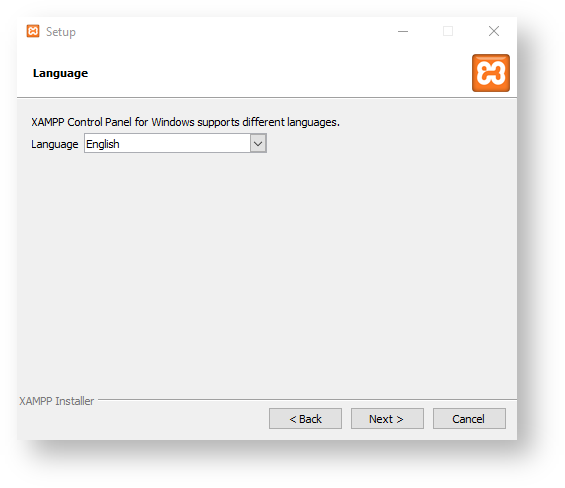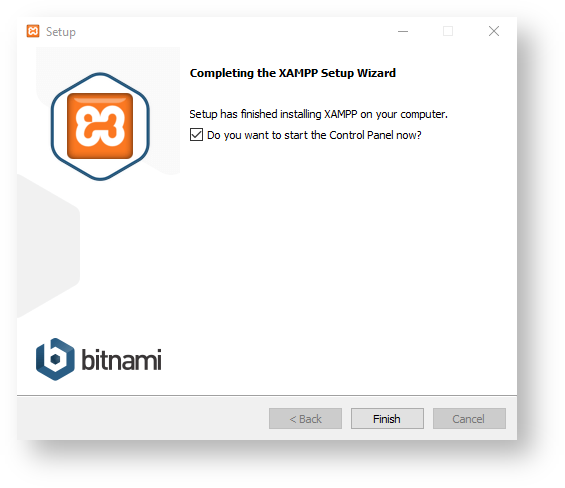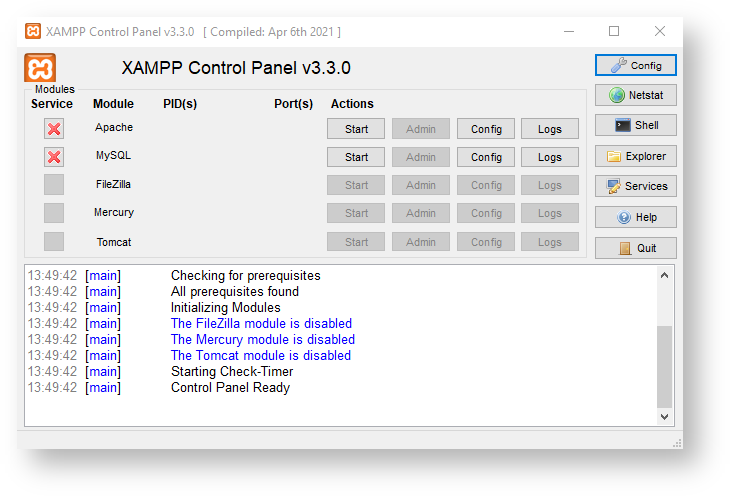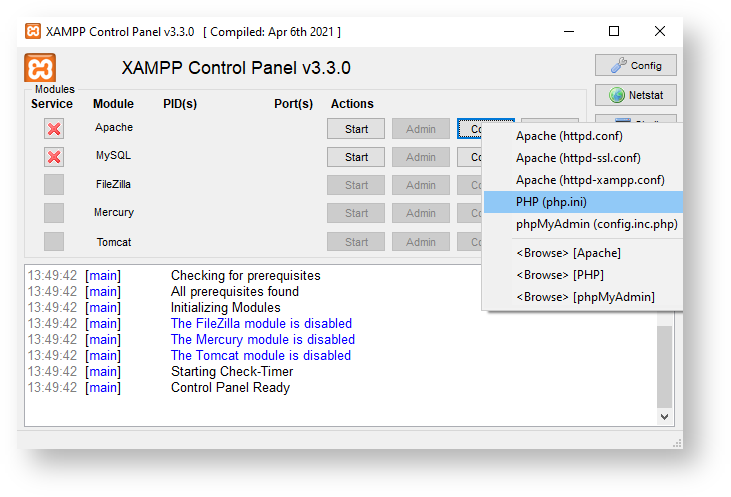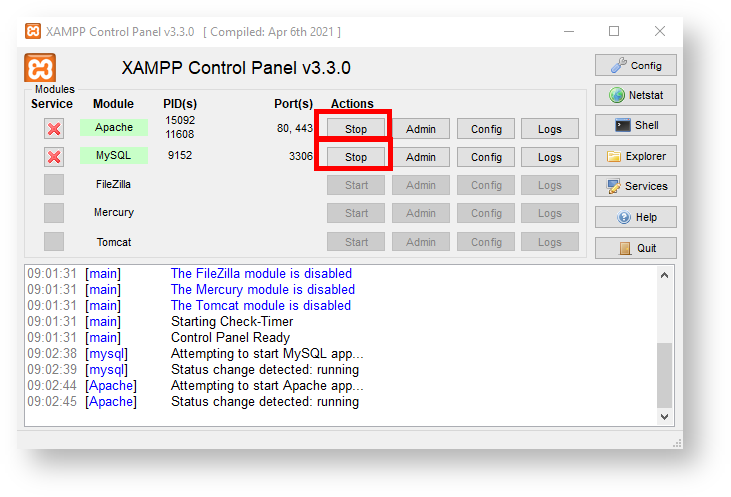i-doit via XAMPP#
This article was last checked for i-doit version 31
Firewall
We deactivate the Windows Firewall for our installation so that RDP and the connection to the Webserver will function. The applications and ports should be configured precisely in the Firewall, however, we don't want to focus on that in this article.
Step 1: Installation of XAMPP#
First of all, download the XAMPP package at https://www.apachefriends.org/index.html. Here we use the installer (xampp-win32-XXX-installer.exe). Other packages are fine too. The compressed package (.zip), for example, can simply be extracted to C:\. It is important to note that the installation path for XAMPP has to be "C:\xampp" as "C:\Program Files (x86)" has not enough permission rights, which most likely will result in a faulty installation. Bitnami is not needed and can be unchecked in the installation process.
Here the System Requirements of the respective i-doit version must be considered. Therefore, in this example the installation package → xampp-windows-x64-7.4.20-0-VC15-installer.exe
At least the components Apache, MySQL and PHP must be installed.
The default folder is left as → C:\xampp
Then we select the language, I leave it at English.
The next few Next > buttons should be self-explanatory.
Now the installation is finished and we start the control panel of XAMPP by clicking Finish.
Step 2: Configuration of XAMPP#
PHP#
Now we configure PHP. For this we click on the button Config → PHP (php.ini) to open the php.ini.
Normally, the file should open automatically with the editor. We add the following settings at the end of the file and save:
1 2 3 4 5 6 7 8 9 10 11 12 13 14 15 16 17 18 19 20 21 22 | |
Additionally, for the LDAP extension, it may be necessary to copy the libsasl.dll file from C:\\xampp\\php\\ to C:\\xampp\\apache\\bin. Also, under Dynamic Extensions, the ;extension=ldap must be freed from the leading semicolon.
Apache Webserver#
Separate settings for the Apache web server are not necessary here.
MySQL/MariaDB#
Now we configure MySQL/MariaDB. For this we click on the button Config → my.ini.
Normally, this file should also be opened automatically with the editor. We also add the following settings here at the end of the file and save:
1 2 3 4 5 6 7 8 9 10 11 12 13 14 15 16 17 18 19 20 21 22 23 24 25 26 27 28 29 30 31 32 33 34 35 36 37 38 39 40 41 42 43 44 45 46 | |
Step 3: Start Apache and MySQL#
We click on the  button for Apache and MySQL. If necessary, a firewall popup will appear. Now both modules should be highlighted in green.
button for Apache and MySQL. If necessary, a firewall popup will appear. Now both modules should be highlighted in green.
Password for the MySQL root#
Now we should set a password for the MySQL root user. For this we click on the  button.
button.
First, we log in:
1 | |
Now we change the password, 'thisistotallysecure!!11' should be replaced with your own password:
1 | |
Step 4: Download and unzip i-doit#
Download and unzip i-doit#
Now we download i-doit in the latest version from the customer portal. We unpack the idoit-xx.x.zip under C:\\xampp\\htdocs and rename the folder to idoit.
Step 5: Checking the installation#
With the previous configuration we have prepared the web server. Now, when we call the IP of the system or localhost in a browser, we should get the welcome page of Apache displayed. Under PHPInfo in the menu you can check if the values set in php.ini were taken over correctly.
Next Step#
Now the operating system is prepared and i-doit can be installed.
Proceed to Setup …
FAQ#
With XAMPP xampp-windows-x64-8.0.23-0-VS16-installer a new version of the PHP extension gd was added. Therefore the php.ini should not be replaced by the one of the PHP 7.4 version.
For PHP 7.4 it was called extension=gd2 and in PHP8.0 it is called extension=gd.
